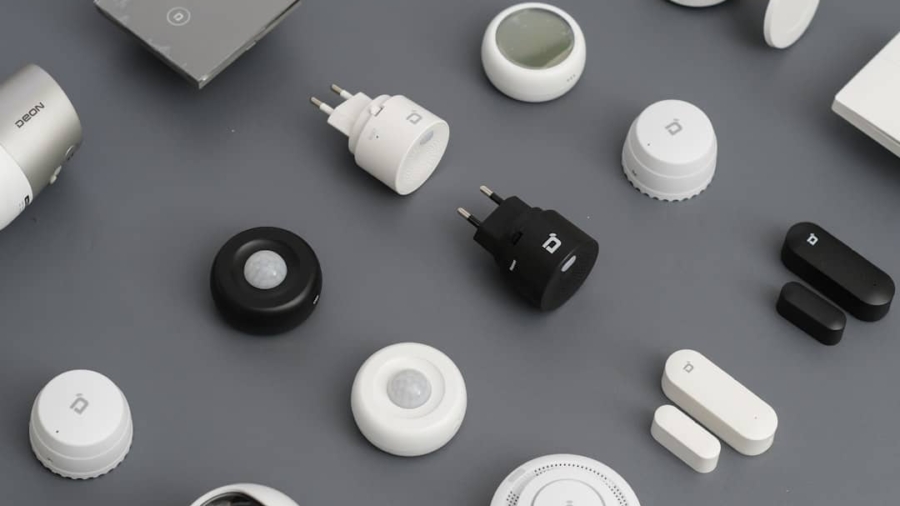The Internet of Things (IoT) has emerged as a transformative force in various sectors, and healthcare is no exception. In the realm of chronic illness management, IoT technologies are revolutionizing how patients monitor their health from the comfort of their homes. Chronic illnesses, such as diabetes, hypertension, and heart disease, require continuous monitoring and management, which can be challenging for both patients and healthcare providers.
The integration of IoT devices into home-based care offers a solution that not only enhances patient engagement but also improves health outcomes through real-time data collection and analysis.
In the context of chronic illness monitoring, these devices can range from wearable sensors that track vital signs to smart home appliances that remind patients to take their medications.
This technology empowers patients to take an active role in their health management while providing healthcare professionals with valuable insights into their patients’ conditions. As the prevalence of chronic diseases continues to rise globally, the need for innovative solutions like IoT in home-based monitoring becomes increasingly critical.
Key Takeaways
- IoT enables real-time monitoring of chronic illness at home, improving patient care and reducing hospital visits.
- Using IoT for chronic illness monitoring at home leads to better patient outcomes, increased patient engagement, and reduced healthcare costs.
- IoT devices allow for continuous remote patient monitoring, providing healthcare professionals with valuable data for timely intervention and personalized care.
- Wearable devices play a crucial role in chronic illness management by tracking vital signs, medication adherence, and activity levels.
- Data collection and analysis through IoT devices help in early detection of health issues, personalized treatment plans, and improved overall patient care.
The Benefits of Using IoT for Chronic Illness Monitoring at Home
One of the most significant advantages of utilizing IoT for chronic illness monitoring is the enhancement of patient autonomy. Patients can manage their health conditions more effectively when they have access to real-time data about their vital signs and other health metrics. For instance, a diabetic patient can use a continuous glucose monitor (CGM) that transmits glucose levels to a smartphone app, allowing them to make informed decisions about their diet and insulin usage.
This immediate feedback loop fosters a sense of control and encourages adherence to treatment plans. Moreover, IoT devices facilitate timely interventions by healthcare providers. With remote monitoring capabilities, clinicians can receive alerts when a patient’s readings fall outside of predetermined thresholds.
This proactive approach not only helps prevent complications but also reduces the need for emergency interventions, ultimately leading to lower healthcare costs and improved patient satisfaction.
How IoT Devices Help in Remote Patient Monitoring

Remote patient monitoring (RPM) is a critical component of chronic illness management, and IoT devices play a pivotal role in its implementation. These devices enable continuous tracking of health parameters without requiring patients to visit healthcare facilities frequently. For instance, smart blood pressure cuffs can automatically record readings and send them to a cloud-based platform where healthcare providers can access the data in real time.
This capability allows for ongoing assessment of a patient’s condition without the logistical challenges associated with in-person visits. Additionally, IoT devices can enhance communication between patients and healthcare providers. Many platforms offer integrated messaging systems that allow patients to ask questions or report concerns directly through the app connected to their monitoring devices.
This two-way communication fosters a collaborative relationship between patients and providers, ensuring that patients feel supported in their health journey. Furthermore, the data collected through these devices can be used to tailor treatment plans based on individual patient needs, leading to more personalized care.
The Role of Wearable Devices in Chronic Illness Management
Wearable devices have become synonymous with health monitoring in recent years, offering users an accessible way to track various health metrics. These devices, which include smartwatches and fitness trackers, are equipped with sensors that monitor heart rate, physical activity levels, sleep patterns, and more. For individuals managing chronic illnesses, wearables provide an invaluable tool for maintaining awareness of their health status throughout the day.
For example, a patient with heart disease may use a smartwatch that continuously monitors their heart rate and alerts them if it exceeds normal levels. This immediate feedback allows the patient to take action—whether it’s resting or contacting their healthcare provider—before a potential crisis occurs. Additionally, wearables often come with companion apps that aggregate data over time, enabling users to visualize trends in their health metrics.
This information can be shared with healthcare providers during consultations, facilitating more informed discussions about treatment options and lifestyle modifications.
The Importance of Data Collection and Analysis in IoT-Based Chronic Illness Monitoring
Data collection is at the heart of IoT-based chronic illness monitoring, providing the foundation for effective management strategies. The continuous stream of data generated by IoT devices allows for comprehensive tracking of a patient’s health over time. This wealth of information can reveal patterns that may not be apparent during sporadic clinical visits.
For instance, analyzing blood sugar levels over several weeks can help identify specific triggers that lead to spikes or drops in glucose levels. Moreover, advanced analytics can transform raw data into actionable insights. Machine learning algorithms can be employed to predict potential health issues based on historical data trends.
For example, if a patient’s weight consistently increases alongside rising blood pressure readings, predictive analytics could alert healthcare providers to intervene before more serious complications arise. This data-driven approach not only enhances individual patient care but also contributes to broader public health initiatives by identifying trends across populations.
Privacy and Security Considerations in IoT-Based Chronic Illness Monitoring

While the benefits of IoT in chronic illness monitoring are substantial, they are accompanied by significant privacy and security concerns. The sensitive nature of health data necessitates robust security measures to protect against unauthorized access and breaches. As IoT devices collect vast amounts of personal health information, ensuring that this data is encrypted and securely transmitted is paramount.
Healthcare organizations must also comply with regulations such as the Health Insurance Portability and Accountability Act (HIPAA) in the United States, which mandates strict guidelines for handling patient information. Patients should be informed about how their data will be used and stored, as well as their rights regarding access and control over their personal information. Transparency in data practices fosters trust between patients and healthcare providers, which is essential for the successful adoption of IoT technologies in chronic illness management.
The Future of IoT in Home-Based Chronic Illness Monitoring
The future of IoT in home-based chronic illness monitoring is poised for significant advancements as technology continues to evolve. Innovations such as artificial intelligence (AI) and machine learning are expected to enhance the capabilities of IoT devices further. For instance, AI algorithms could analyze data from multiple sources—such as wearables, electronic health records, and even social determinants of health—to provide more comprehensive insights into a patient’s well-being.
Additionally, the integration of telehealth services with IoT monitoring will likely become more prevalent. Patients may have virtual consultations with healthcare providers while simultaneously sharing real-time data from their monitoring devices. This seamless integration will facilitate more dynamic interactions between patients and providers, allowing for immediate adjustments to treatment plans based on current health status.
Furthermore, as IoT technology becomes more affordable and accessible, its adoption among diverse populations is expected to increase. This democratization of healthcare technology could lead to improved health outcomes across various demographics, particularly among underserved communities who may benefit from enhanced access to chronic illness management tools.
The Impact of IoT on Improving Chronic Illness Management at Home
The integration of IoT technologies into home-based chronic illness monitoring represents a paradigm shift in how patients manage their health conditions. By empowering individuals with real-time data and facilitating proactive communication with healthcare providers, IoT enhances patient engagement and promotes better health outcomes. As wearable devices and remote monitoring solutions continue to evolve, they will play an increasingly vital role in chronic illness management.
However, it is essential to address privacy and security concerns associated with these technologies to ensure that patients feel safe sharing their health information. As we look toward the future, the potential for IoT to transform chronic illness management is immense, promising a more connected and responsive healthcare ecosystem that prioritizes patient well-being above all else.
In a related article discussing the best software for presentations in 2023, the importance of utilizing technology in various aspects of our lives is highlighted. Just as IoT plays a crucial role in home-based chronic illness monitoring, the right software can enhance communication and engagement in presentations, making information more accessible and impactful. Both articles underscore the significance of leveraging technology to improve efficiency and effectiveness in different areas of our daily routines.
FAQs
What is IoT?
IoT stands for Internet of Things, which refers to the network of physical devices, vehicles, home appliances, and other items embedded with electronics, software, sensors, actuators, and connectivity which enables these things to connect and exchange data.
How does IoT help in home-based chronic illness monitoring?
IoT devices can be used to monitor and track various health parameters such as heart rate, blood pressure, glucose levels, and medication adherence. This data can be transmitted to healthcare providers in real-time, allowing for timely intervention and personalized care.
What are some examples of IoT devices used in home-based chronic illness monitoring?
Examples of IoT devices used in home-based chronic illness monitoring include wearable fitness trackers, smart blood pressure monitors, connected glucose meters, and medication adherence systems. These devices can provide valuable data to both patients and healthcare providers.
What are the benefits of using IoT in home-based chronic illness monitoring?
The use of IoT in home-based chronic illness monitoring can lead to improved patient outcomes, reduced hospital admissions, and better management of chronic conditions. It also allows for remote monitoring, early detection of health issues, and personalized care plans.
Are there any challenges or concerns with using IoT in home-based chronic illness monitoring?
Some challenges and concerns with using IoT in home-based chronic illness monitoring include data security and privacy issues, interoperability of devices and systems, and the need for proper training and education for both patients and healthcare providers. Additionally, there may be concerns about the accuracy and reliability of the data collected by IoT devices.

